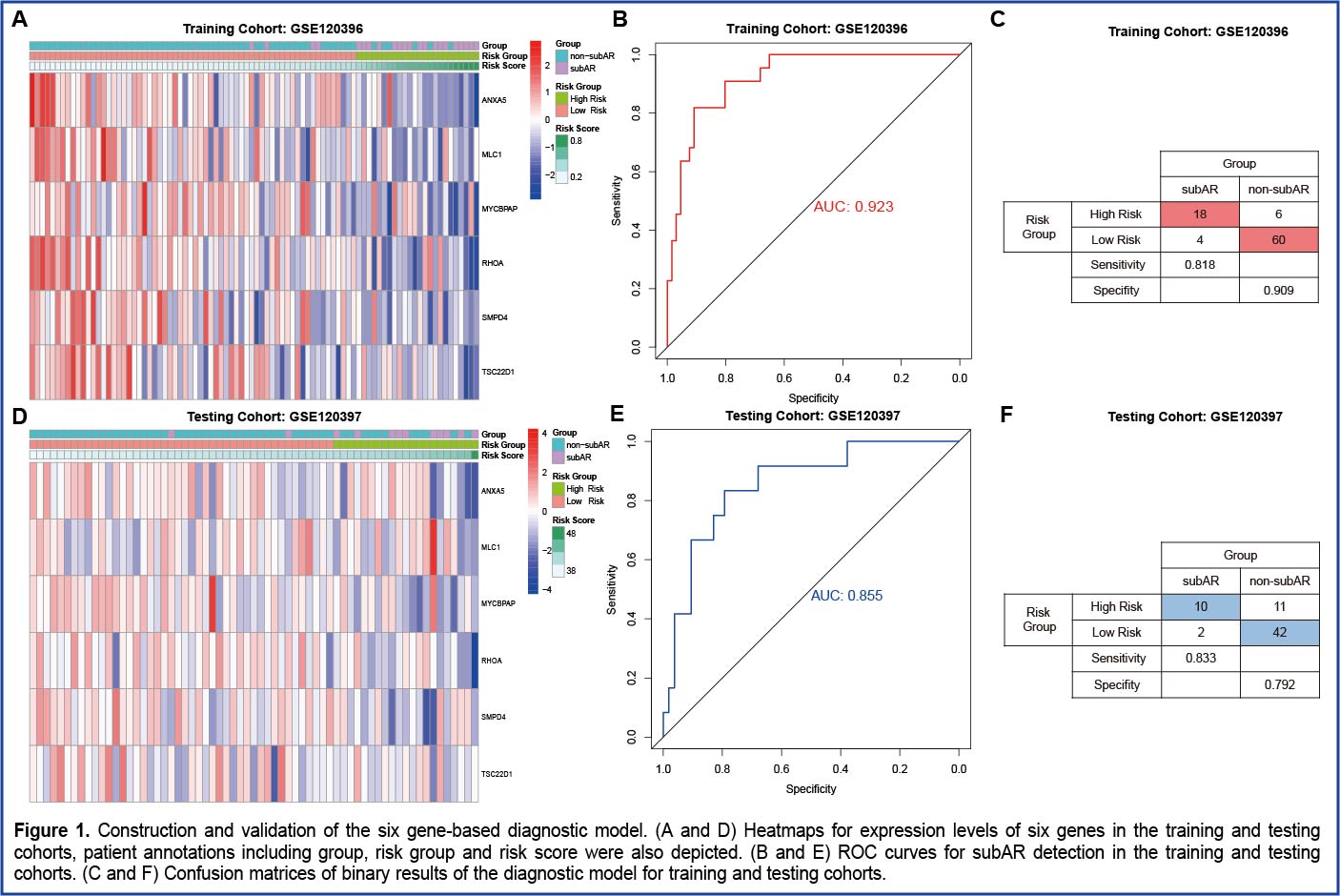Identification Of A Novel Peripheral Blood Six-gene Signature Diagnosing Subclinical Acute Rejection After Renal Transplantation
Department of Urology, Beijing Chao-Yang Hospital, Capital Medical University, Beijing, China
Meeting: 2022 American Transplant Congress
Abstract number: 9080
Keywords: Genomic markers, Kidney transplantation, Rejection
Topic: Basic Science » Basic Clinical Science » 17 - Biomarkers: Clinical Outcomes
Session Information
Session Name: Biomarkers: Clinical Outcomes
Session Type: Poster Abstract
Date: Tuesday, June 7, 2022
Session Time: 7:00pm-8:00pm
 Presentation Time: 7:00pm-8:00pm
Presentation Time: 7:00pm-8:00pm
Location: Hynes Halls C & D
*Purpose: Given the insensitivity and nonspecificity of serum creatinine, invasive surveillance biopsies are the main way to detect subclinical acute rejection (subAR) in the absence of renal dysfunction. Noninvasive biomarkers are needed to detect subAR with less cost and minimal tissue injury. This study aims to utilize machine learning methods to construct a peripheral blood-based gene signature for subAR after kidney transplantation.
*Methods: After systematically screening databases, two cohorts of high quality with 3-month blood profiles and biopsy-proven graft status from the Gene Expression Omnibus databases were employed as training and validation cohorts. Then, the machine learning algorithms (support vector machine recursive feature elimination and t statistic, termed as “SVM-RFE”) and the least absolute shrinkage were used to identify key biomarkers for subAR. Subsequently, the stepwise logistic regression method was applied to construct a gene signature for subAR in the training cohort. Patients were divided into high-risk and low-risk groups based on the cutoff point identified by the ROC curve. Then, the signature was validated in an independent validation cohort with fixed formula and cutoff point. Single-sample Gene Set Enrichment Analysis (ssGSEA) was used to estimate immune cells in the blood.
*Results: Fifty key biomarkers were filtered out with the machine learning algorithms. Then, a novel six-gene signature was constructed using the least absolute shrinkage and stepwise logistic regression method. The signature had high accuracy in both training (AUC=0.923) and validation cohort (AUC=0.855). Additionally, these six genes were found to have significant and consistent relationships with blood immune cells in both cohorts, especially for T cells.
*Conclusions: We developed a novel peripheral blood six-gene signature to non-invasively diagnose renal subAR, which offered an accurate and convenient tool for clinical practice.
To cite this abstract in AMA style:
Zhang H, Xu Y, Wang Y, Hu X. Identification Of A Novel Peripheral Blood Six-gene Signature Diagnosing Subclinical Acute Rejection After Renal Transplantation [abstract]. Am J Transplant. 2022; 22 (suppl 3). https://atcmeetingabstracts.com/abstract/identification-of-a-novel-peripheral-blood-six-gene-signature-diagnosing-subclinical-acute-rejection-after-renal-transplantation/. Accessed December 28, 2025.« Back to 2022 American Transplant Congress


